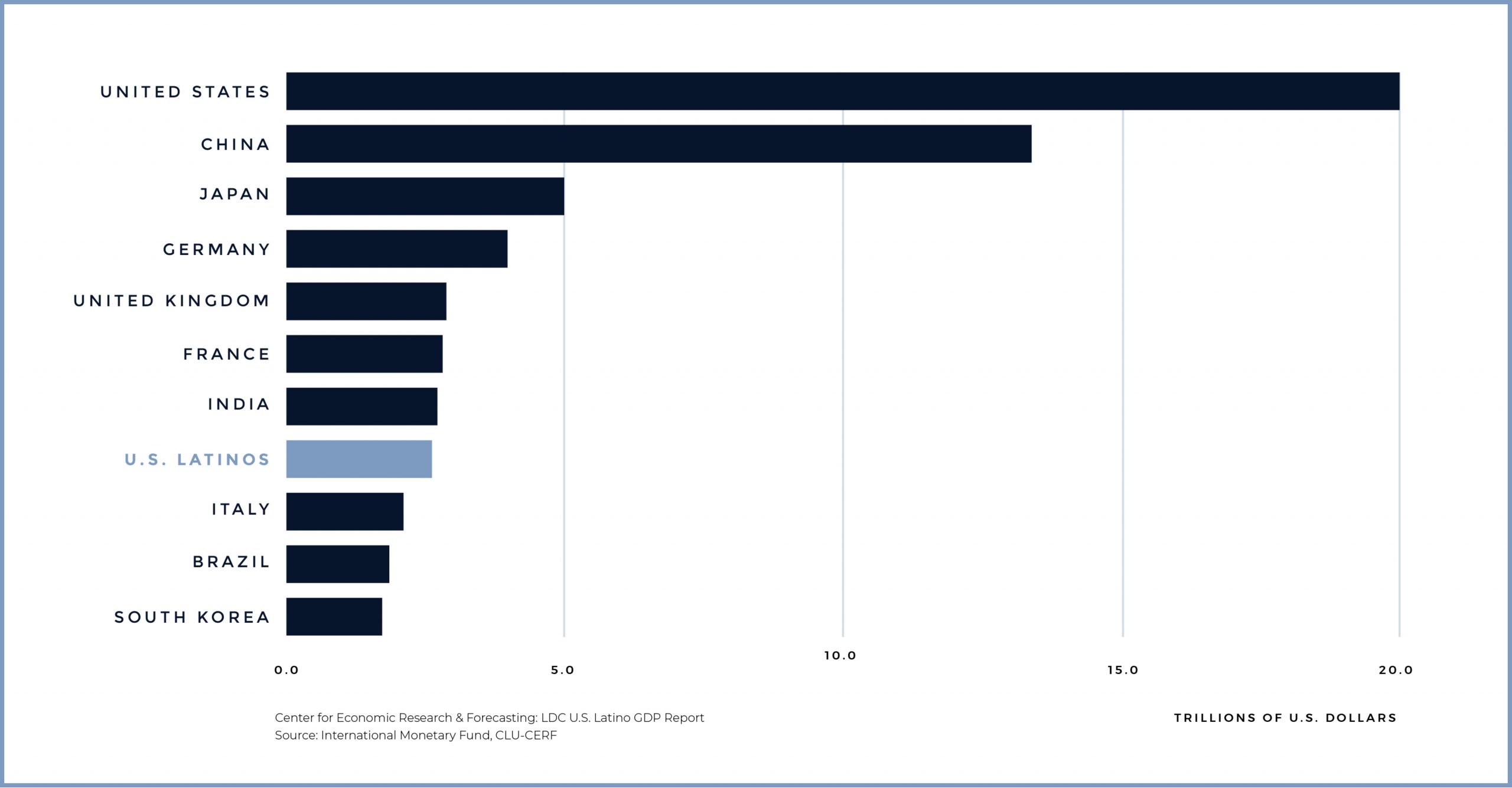The Hispanic Market has become the New Mainstream. Due to their enormous contribution to workforce and consumption growth “Latinos play a crucial role in the new Mainstream Economy”, Sol Trujillo, Co-Founder L’ATTITUDE tells Portada. The key role of Latinos in the present and future of the multicultural U.S. economy will be discussed at the L’ATTITUDE Conference in San Diego from September 29 to October 2, 2021.

Latinos are by a very wide margin the number one factor explaining workforce, population and GDP growth in the United States, Sol Trujillo, Co-Founder L’ATTITUDE asserts. This fact creates major opportunities for growth in what Trujillo calls the new mainstream economy, which will be discussed by entrepreneurs, business executives and celebrities at the L’ATTITUDE Conference from September 29 to October 2, 2021. “I want every business professional to come to L’ATTITUDE to see what the conversation is about.”
According to Trujillo the difference between XX and XXI Century America is defined by the two “Ds”; Digitization and Demographics, the latter being driven by Latinos. “The goal of L’ATTITUDE is to identify and inspire actions that help grow the New Mainstream Economy in our country, not simply talk about growth in theoretical terms,” Trujillo, adds.
Hispanic Market: Latino GDP is the World’s Eighth Largest…
As a summary statistic for the economic performance of Latinos in the United States, the 2018 Latino GDP is breath-taking. The total economic output (or GDP) of Latinos in the United States was US $2.6 trillion in 2018, up from US $2.3 trillion in 2017, and US $1.7 trillion in 2010. If U.S. Latinos were a stand-alone country, they would account for the 8th largest GDP in the world – larger than the GDPs of Italy, Brazil or South Korea (see chart below).

While impressive for its size, the U.S. Latino GDP is most noteworthy for its extraordinary growth rate. Among the world’s 10 largest GDPs in 2018, the Latino GDP was the single fastest growing. Latino real GDP grew 21 percent faster than India’s and 30 percent faster than China’s.
The single largest driver of rapid Latino GDP growth since 2010 is personal consumption. From 2010 to 2018, Latino real consumption grew 133 percent faster than non-Latino consumption. This dramatic increase is driven by large gains in personal income, which naturally flow from Latinos’ rapid gains in educational attainment and strong labor force participation.
There is no cohort in America that is more resilient than the Latino cohort. Even during the pandemic, the latest NAHREP (National Association of Hispanic Real Estate Professionals) report shows that in 2020 the Hispanic market accounted for 52% of all net new mortgages. “Even with the pandemic, Latinos are still the primary believers of the American dream, there was even an increase in the number of second homes owned by Latinos. Latinos are matriculating on to college at the highest rate of all cohorts,” Trujillo notes.
The Latino GDP annual growth rate will be announced at the 2021 edition of L’ATTITUDE. The data is estimated by scientists employed by the Latino Donor Collaborative, a non-profit organization that strives to create a fact-based narrative of the Hispanic market through original research. The GDP is based on a detailed, bottom-up construction which leverages publicly available data from major U.S. agencies. The most recent year for which the core building block is available is 2018.
Latinos Explain the Vast Majority of U.S. Population and GDP Growth
According to Trujillo, who served as the CEO of Telstra, US West and Orange S.A. and has held executive positions in the United States Federal government, the Hispanic market contribution to U.S. population growth is particularly critical in the light of low baby boomer and Gen X birth rates. Accounting for 60% of expected population growth from 2005 – 2050, US Latinos are the fastest growing ethnic cohort in America. Trujillo notes that the “single most explanatory factor for GDP growth is labor force growth rate. Because there are more people working with more money in their pockets and this allows them to consume more and therefore the national output grows.”
As a passionate American citizen, Trujillo says that he needs to make sure that GDP growth is sustainable on the face of a a declining population growth rate of the Anglo American cohort: “The baby boomer cohort is at a net decline, the GenX birth rate is even lower. The African American population growth is flat and the Asian American is growing, but from a small basis. The very high Latino cohort growth rate is more than offsetting the net negative growth of the Anglo American cohort.”
More Immigration Needed to Increase Workforce
Trujillo, the first CEO of a major corporation who is Latino, adds that the only way for continued growth of the U.S. economy is through more workers who can consume: “Robots do not consume, although everyone says they will replace everybody.” As an example of the negative impact of restrictive immigration policies, Trujillo cites Japan, a country that was very productive through the baby boomer cohort and has been stagnant for the last two decades, because it stopped immigration. According to Trujillo, in about 7-8 years China will be hitting the same wall. Trujillo refers to the Reagan administration as an example of an economically impactful immigration policy. On Nov. 6, 1986 Ronald Reagan signed the Immigration Reform and Control Act of 1986, the most far-reaching immigration law passed during his presidency. The Act’s most significant effect was that it allowed immigrants who had entered the U.S. illegally before Jan. 1, 1982 to apply for legal status, provided they paid fines and back taxes. This provision — which Reagan himself referred to as “amnesty,” allowed around 3 million immigrants to secure legal status after paying US $185, demonstrating “good moral character” and learning to speak English.
Hispanic Market: Access to Capital is Paramount
As the aging baby boomer cohort retires, Hispanic market participants are increasingly creating businesses and jobs. In fact Trujillo says that “Latinos are the most prolific entrepreneurial cohort in America, generating over 80% of net new business, but they don’t have access to capital. We need more people to create wealth by providing access to capital and fund investments.” Access to capital will be an important topic on the agenda of the upcoming L’ATTITUDE conference Sep. 29-Oct. 2, 2021.







